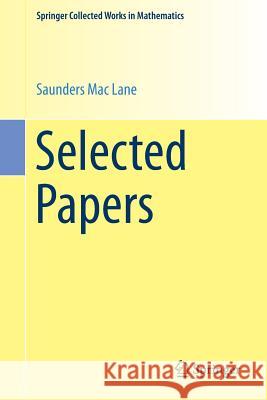Selected Papers » książka
Selected Papers
ISBN-13: 9781493972609 / Angielski / Miękka / 2017 / 556 str.
A preface usually ends with appropriate expressions of thanks to the people who have helped. I would like instead to begin in that way. Most important is my gratitude to Samuel Eilenberg, Roger Lyndon, and Max Kelly, who joined me in contributing essays, and to Alfred Putnam who wrote the biography that leads off the volume. Dorothy Mac Lane helped generously with her encouragement (and of course her special source of information). Freda Davidson pitched in gallantly in helping to proofread the selected papers for typographical slips that had somehow eluded the eagle eye of Saunders Mac Lane (there turned out to be mighty few). When tricky problems came up I could always rely on Herman Meyer to solve them. John Gray enriched the year by organizing a highly successful conference in Aspen on May 23-27, 1979. Lastly, Walter Kaufmann- Buhler of the Springer-Verlag brought to bear his immense know-how and met all my wishes (with a smile, I think). Saunders Mac Lane will be seventy years old on August 4, 1979, and with a little luck, the date of publication will work out to be within epsilon of this target date. Happy birthday, Saunders (My colleagues in Eckhart Hall who watch his close approximation to perpetual motion will find this hard to believe. ) As Max Kelly remarks in beginning his essay, Saunders has given us bits of his own overview of hi cientific career in 93] and 115].
Covering a period up to 1971, this selection of Saunders Mac Lane's most distinguished papers takes the reader on a journey through the most important milestones of the mathematical world in the twentieth century. Mac Lane was an extraordinary mathematician and a dedicated teacher who cared earnestly about the values of science and education. His life spanned nearly a century of mathematical progress. In his earlier years, he participated in the exciting developments in Göttingen. He studied under David Hilbert, Hermann Weyl, and Paul Bernays. Later, he contributed to the more abstract and general mathematical viewpoints which emerged in the twentieth century. Perhaps the most outstanding accomplishment during his long and extraordinary career was the development of the concept and theory of categories, together with Samuel Eilenberg, which has broad applications in different areas, in particular in topology and the foundations of mathematics.











